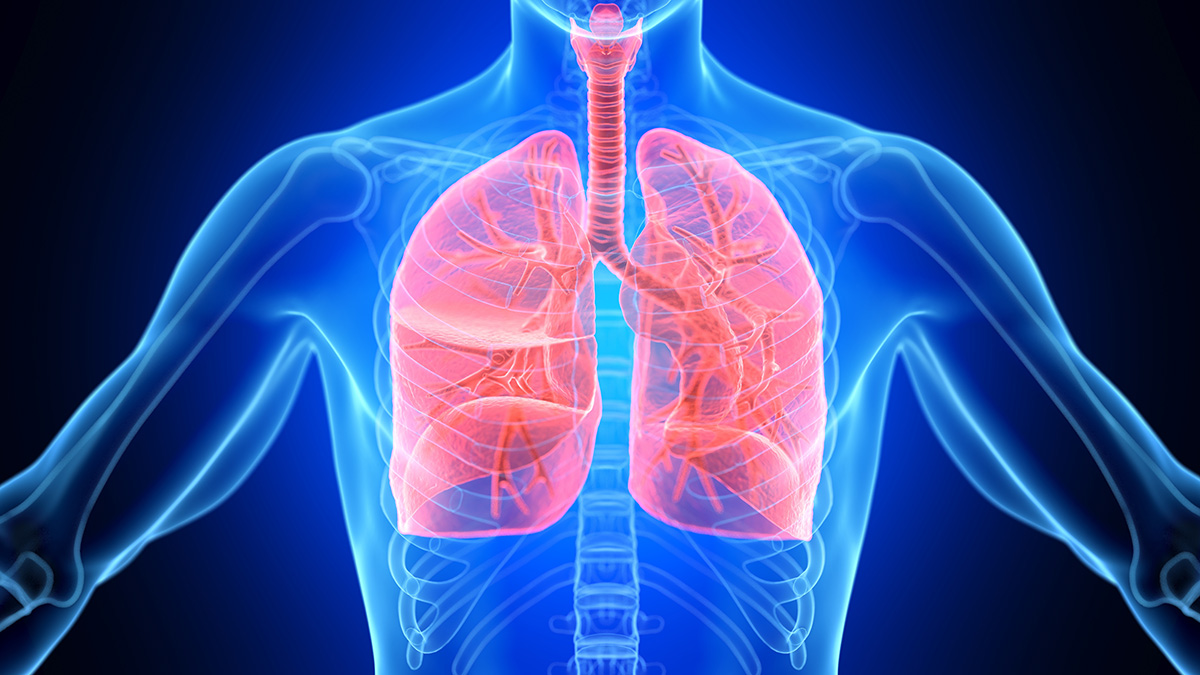Experimental blood test predicts risk for developing COPD, other severe respiratory diseases

News Release
Tuesday, September 10, 2024
A scientific team supported by the National Institutes of Health (NIH) has created a preclinical blood test to identify adults most likely to develop severe respiratory conditions, including chronic obstructive pulmonary disease (COPD). The blood test analyzes 32 proteins that scientists determined accurately predicted an adult with an increased likelihood for requiring medical care for or dying from severe respiratory illness. The risk score was based on lung health data collected from nearly 2,500 U.S. adults over a 30-year period. The findings were published in the American Journal of Respiratory and Critical Care Medicine.
“We are still not ready for this test to be used in practice, but it’s a promising advance,” said James P. Kiley, Ph.D., director of the Division of Lung Diseases at NIH’s National Heart, Lung, and Blood Institute (NHLBI), which funded the study. “It consolidates insights from decades of breathing tests and medical evaluations into a single tool that has the potential to identify patients at risk for severe disease and complications.”
To create the risk score, investigators first reviewed lung health data collected from 2,470 adults, ages 18-30, who participated in a 30-year cardiovascular health study. They then screened thousands of proteins from blood samples provided by participants at the 25-year mark and selected 32 that best predicted which participants were having a rapid decline in lung function. These 32 proteins were then compiled in a score to predict how likely a person would either need medical treatment for or die from a lung condition or severe respiratory event.
Adults with higher scores had a 17% increased chance of requiring hospital care for respiratory illness, an 84% increased chance of developing COPD, and at least an 81% increased chance of dying from a respiratory disease, such as COPD or pneumonia. Adults with higher scores also had a 10% increased chance of experiencing respiratory exacerbations, such as a cough, mucus, or shortness of breath, that required treatment.
“Loss of lung function on a year-over-year basis is associated with poor respiratory health outcomes, but we do not have a good way to easily figure out if a patient is on a steep trajectory of lung function decline,” said Ravi Kalhan, M.D., a study coauthor and the Louis A. Simpson Professor of Pulmonary Medicine at the Northwestern University Feinberg School of Medicine, Chicago. “If we had an easy-to-implement clinical tool, like a blood test, that captured someone’s lung function trajectory at a single time point, it would enable earlier interventions which might, in the long run, improve lung health.”
Participants in the decades-long study took breathing tests to measure their lung function — up to six times throughout the study — and generated other lung health data. Throughout this period, 2,332 participants experienced a normal decline in lung function and 138 experienced a sharp decline.
To test the risk score, researchers used it to retrospectively assess respiratory disease risks in more than 40,000 adults from two earlier observational studies. The prediction model successfully identified adults who had the greatest chance of having severe respiratory conditions after multiple factors, including sex, race, body weight, asthma, and a history of smoking, were accounted for.
“Similar to using cholesterol levels to gauge a patient’s risk for having a heart attack, we’re looking at biological pathways to predict a person’s risk for having COPD or severe complications from COPD,” said Gabrielle Y. Liu, M.D., a study coauthor, pulmonologist, and an assistant professor of medicine at the University of California, Davis Medical Center in Sacramento.
This type of blood test still needs to be studied in clinical trials before being considered for approval by the Food and Drug Administration as a screening tool to help predict risks for chronic respiratory diseases. These conditions affect millions of adults worldwide and were the third-leading cause of death in 2019. Leading risk factors include smoking, air pollution, and exposure to chemicals or lung irritants, including gas, fumes, and dust, in the workplace.
About the National Heart, Lung, and Blood Institute (NHLBI): NHLBI is the global leader in conducting and supporting research in heart, lung, and blood diseases and sleep disorders that advances scientific knowledge, improves public health, and saves lives. For more information, visit https://www.nhlbi.nih.gov.
About the National Institutes of Health (NIH):
NIH, the nation’s medical research agency, includes 27 Institutes and Centers and is a component of the U.S. Department of Health and Human Services. NIH is the primary federal agency conducting and supporting basic, clinical, and translational medical research, and is investigating the causes, treatments, and cures for both common and rare diseases. For more information about NIH and its programs, visit www.nih.gov.
NIH…Turning Discovery Into Health®
Study
Liu G, Perry A, Washko G, et al. Proteomic risk score of increased respiratory susceptibility: a multi-cohort study. Am J Respir Crit Care Med. 2024; doi: 10.1164/rccm.202403-0613OC.
link





